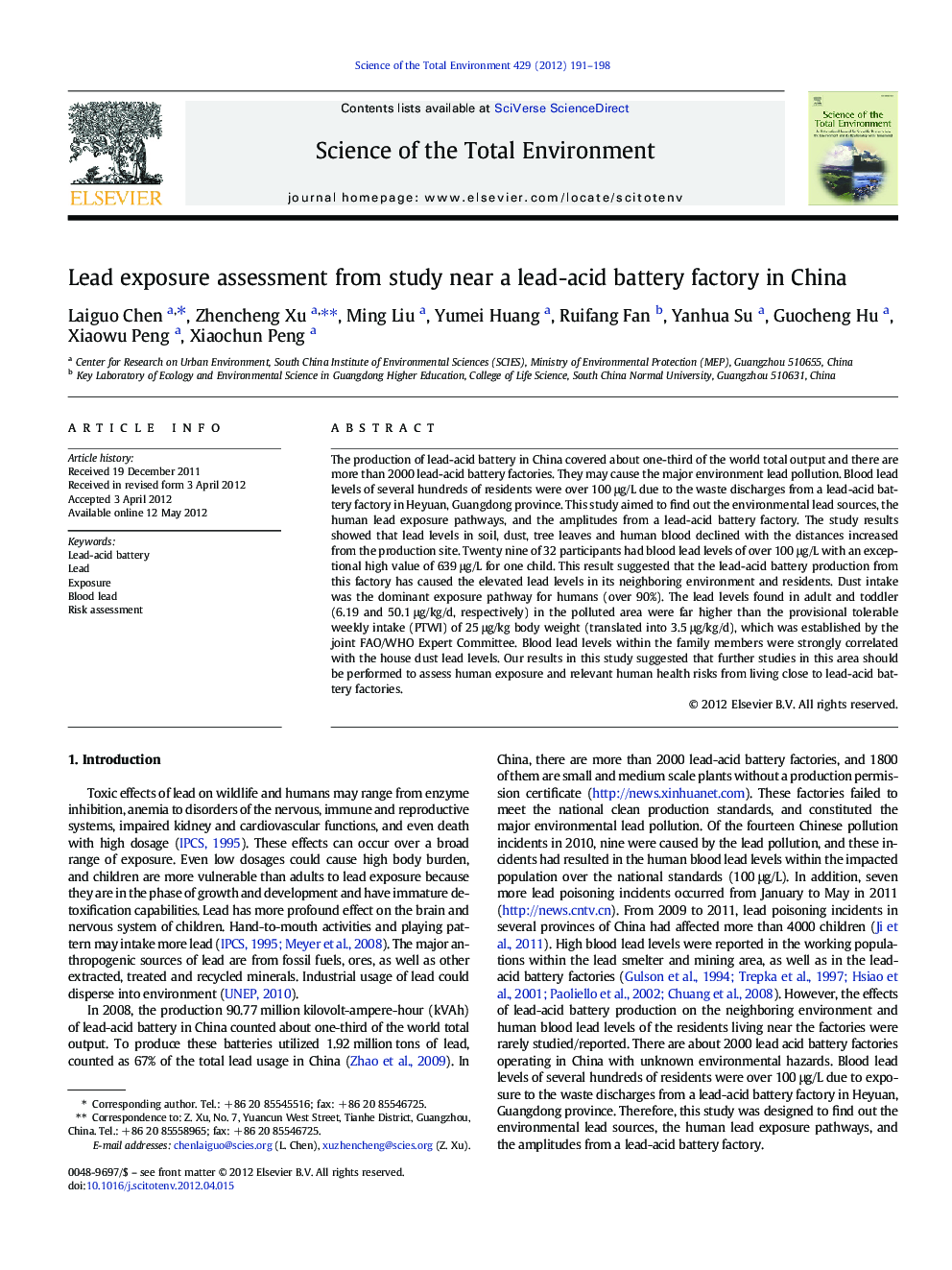| کد مقاله | کد نشریه | سال انتشار | مقاله انگلیسی | نسخه تمام متن |
|---|---|---|---|---|
| 4429381 | 1619823 | 2012 | 8 صفحه PDF | دانلود رایگان |

The production of lead-acid battery in China covered about one-third of the world total output and there are more than 2000 lead-acid battery factories. They may cause the major environment lead pollution. Blood lead levels of several hundreds of residents were over 100 μg/L due to the waste discharges from a lead-acid battery factory in Heyuan, Guangdong province. This study aimed to find out the environmental lead sources, the human lead exposure pathways, and the amplitudes from a lead-acid battery factory. The study results showed that lead levels in soil, dust, tree leaves and human blood declined with the distances increased from the production site. Twenty nine of 32 participants had blood lead levels of over 100 μg/L with an exceptional high value of 639 μg/L for one child. This result suggested that the lead-acid battery production from this factory has caused the elevated lead levels in its neighboring environment and residents. Dust intake was the dominant exposure pathway for humans (over 90%). The lead levels found in adult and toddler (6.19 and 50.1 μg/kg/d, respectively) in the polluted area were far higher than the provisional tolerable weekly intake (PTWI) of 25 μg/kg body weight (translated into 3.5 μg/kg/d), which was established by the joint FAO/WHO Expert Committee. Blood lead levels within the family members were strongly correlated with the house dust lead levels. Our results in this study suggested that further studies in this area should be performed to assess human exposure and relevant human health risks from living close to lead-acid battery factories.
► Study a lead-acid battery factory's effects on the nearby environment and residents.
► Atmospheric dispersion was the main route for environmental Pb pollution propagation.
► Dust intake was the dominant exposure pathway for humans.
► The calculated lead exposure levels in the polluted area were far higher than PTWI.
► Elevated blood lead levels were strongly correlated with house dust lead levels.
Journal: Science of The Total Environment - Volume 429, 1 July 2012, Pages 191–198